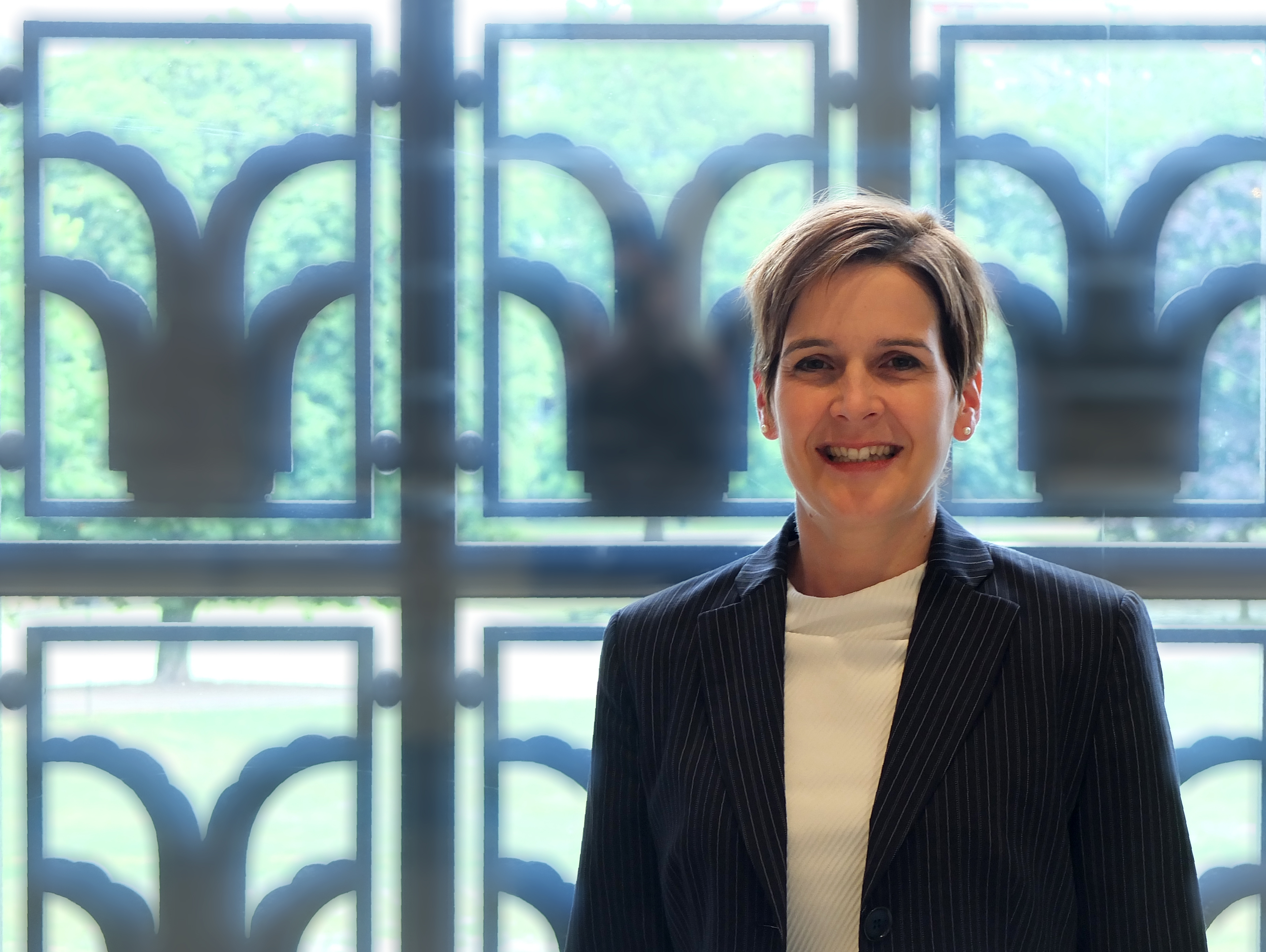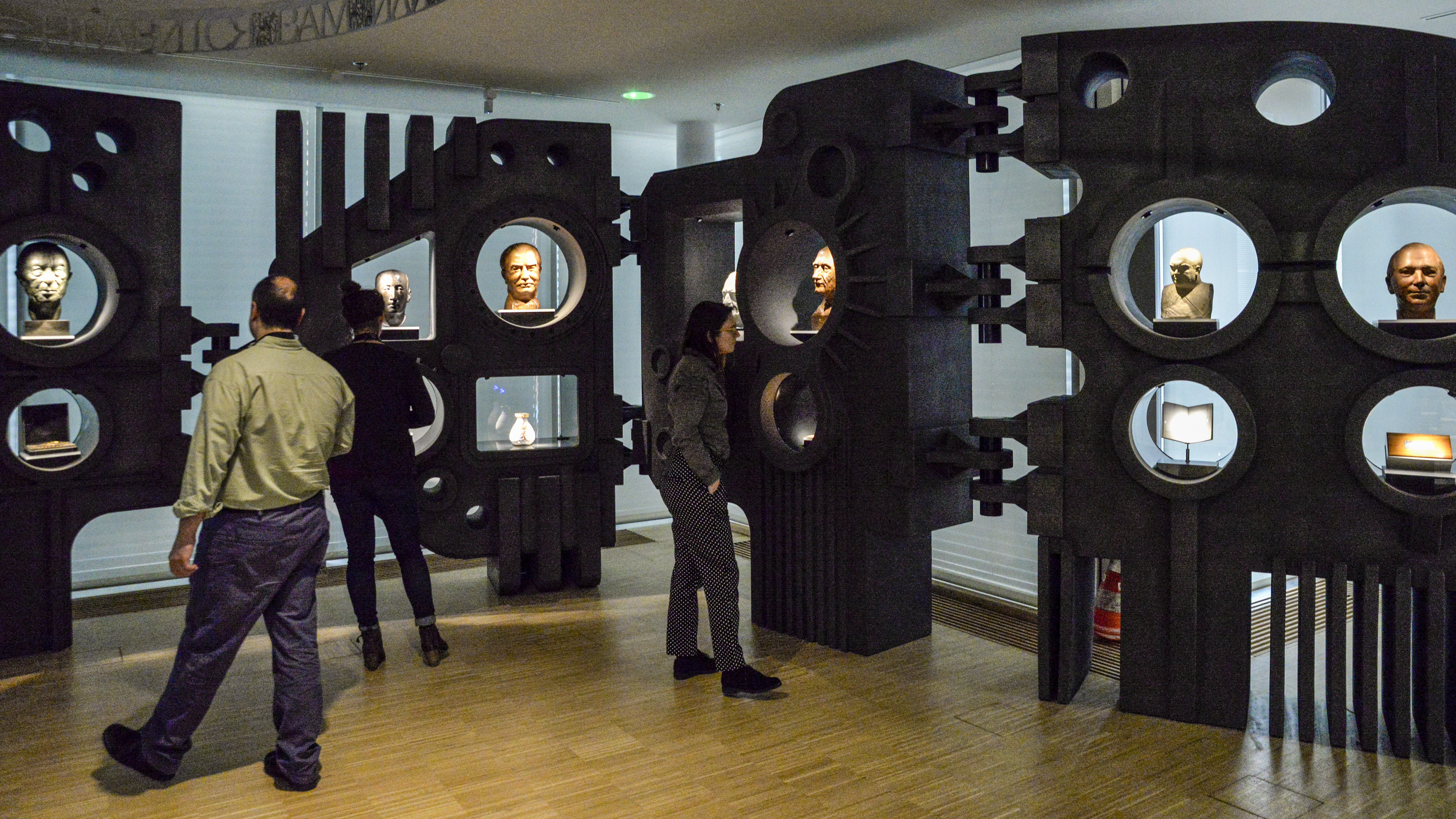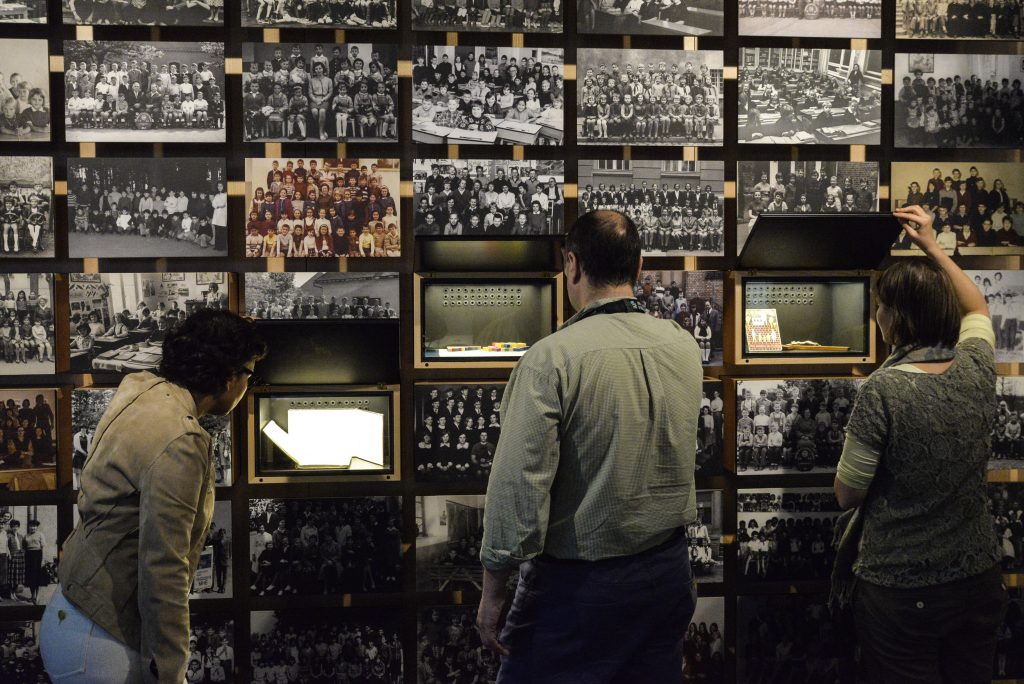Interview with Constanze Itzel, Head of Unit at the House of European History
Cover picture: Constanze Itzel at the House of European History. © European Union 2017 – Source : EP
The House of European History opened its doors to the public on May 6, 2017 with the aim to to encourage citizens to reflect upon and debate about the history of Europe and of European integration. Observing Memories talked to its Head of Unit, Dr. Constanze Itzel, about the chalanges of building a transational project on memories.
What are the main goals of the House of European History?
The House of European History aims to be a place for learning, reflection and debate. It intends to raise curiosity and to enable learning and critical reflection about shared historical processes and their diverging perceptions. To that end, exhibitions, learning and cultural programmes and online offers, have been developed, which offer our visitors engaging, thought-provoking and emotional experiences.
The House of European History complements the museum landscape with a unique museum which looks at history from a European point of view – as a complement to the many local, regional, and national museums. Through this, we want to contribute to Europeanising historical and museum debates and to enhance the European dimension in history-teaching. In short, to make a maximum of people look outside the constructs of their national history and raise awareness of the many cross-border connections and shared experiences.
We are building up our own collection of a European nature: It does not intend to duplicate national collections but to collect objects, documents, and audio-visual content of European significance, such as, for example, the first designs for the Euro symbol. The House of European History will thus serve as a reservoir of European memory in all its diversity and complexity.
Finally, we also provide a hub for connections and partnerships around European history, a platform of exchange for historians, memory experts and museum colleagues. Many cultural actors with a European outlook will be our natural partners for joint projects and undertakings.

Does the House of European History envisage citizen participation to contribute to exhibitions’ content?
Definitely. At the moment, as a first attempt, people across Europe and beyond can contribute their input through a website (www.myinteractions.eu) into a collective map of intercultural contacts: This map is displayed in our first temporary exhibition “Interactions”, which deals with different forms of contact and the traces they have left in our cultural heritage. When people answer questions related to this topic on the website, connections from their life are fed in real-time into the exhibition space and merged on a big map in the atrium space with the networks of other participants. Content is here systematically created together by people online and in Brussels. The result is an ever-changing map in the exhibition and a rich web of present-day contacts which can be explored onsite and online. The results are very interesting: The places most often selected become more and more visible, big cities appear on the map, but also hubs indicating people’s similar preferences, such as Italian cities for food, English cities for music, and so on. Connections to places outside of Europe show a strong general westward orientation but also many connections to Asian cuisine. This collective visualisation experiment therefore demonstrates how strongly our contacts – and our mental maps – are influenced by history, be it the Cold War, the guest-worker movement bringing Italian cuisine to the North, or globalisation.
In the future, we would like to enhance this kind of participative project through cooperation with partners such as Europeana and through developing other forms of participation or even co-creation in exhibitions or events. What is more, the research service of the European Parliament has created a participative platform called “My House of European History” which should be integrated and connected with our offers.
In regard to the naming of the House of European History, why was the term “house” chosen as opposed to “museum” or “memorial”?
In the initial discussions, the term “House” was first used to signify a larger concept: The House of European History was thought, from the beginning, to house not only exhibitions but also a documentation and information centre about European history. The name also connects our project to a certain type of contemporary history museum which has been initiated over the past four decades: Not only the successful Haus der Geschichte der Bundesrepublik Deutschland uses this term but also smaller Houses of History in some German Federal States and projects in the Netherlands, Austria, and France which have not been realised to date. They have all preferred using “House of History” over terms related to museums.
Our team has developed the “House” concept further. For us, a house has a positive connotation, it can be associated with “home” – and we like to see the House of European History as a home for European memories in all their diversity. Rather than a memorial for a fixed and clearly defined historical event or period, it is an open concept which can be understood as a recipient for evolving content.

Did the project encounter specific challenges when constructing a transnational memory that surpasses the borders of national states?
First of all, I would not say that we have already constructed a transnational memory. In our view, memory is something evolving and contested, which keeps changing over time. What we have constructed in our permanent exhibition is a transnational historical narrative, in which uses a critical concept of memory as one of the ‘red threads’, reappearing at different points of the exhibition.
In our view, memory is something evolving and contested, which keeps changing over time.
The way in which we have constructed the narrative is that we have concentrated on those events and processes which have originated in Europe, have spread more or less across the whole continent, and which are still relevant today. These three criteria were the basis for the selection of the topics of our exhibition – they are arranged in a roughly chronological order starting from the 19th century up until today. In a prologue to the permanent exhibition, we raise awareness for the fact that memory and heritage are subject to interpretation, changing with the point of view and the time period of the beholder. Memory and oblivion are strongly connected in an individual person’s mind, as well as at a collective level: A society decides what it wants to remember or forget, partly for subjective or emotional reasons. Similarly, it is up to us Europeans to choose what we want to acknowledge as being part of European heritage or not. By presenting the topics of heritage and memory together, we question whether a shared European memory exists and if yes, what it entails. This critical approach introduced at the beginning of the exhibition comes back when we look at concrete case studies illustrating the – only gradually emerging – memory of the Shoah or the shared and divided memory following the end of the Cold War. Here, we show different political and personal forms of coming to grips with the past, between suppression and recognition, and we address the divisiveness but also the common ground of differing memories.
Memory and oblivion are strongly connected in an individual person’s mind, as well as at a collective level: A society decides what it wants to remember or forget, partly for subjective or emotional reasons. Similarly, it is up to us Europeans to choose what we want to acknowledge as being part of European heritage or not.
Obviously, we have had to overcome challenges for the development of this European narrative. First of all, there is the practical issue of language: We had brought together historians and curators from across Europe to work on this project, and for some of them this was the first time they had to do the full exhibition development in English, with historiographical and museological terms sometimes differing according to their origins and mother tongue. Also to read the relevant literature and to communicate with museum colleagues in as many European languages as possible was a challenge and required some intense teamwork. Second, the historical literature did not always have the European outlook necessary for us – sometimes books on certain topics are too focussed on the big countries or on Western Europe only. Third, finding objects from across Europe was a huge challenge: some museum collections are badly documented but still we wanted to get objects from as many countries as possible – 37 in the end when counting the loans for the permanent and the first temporary exhibition. Fourth, ideas about the ideal exhibition scenography were quite diverging, also influenced by national traditions, and finally, agreeing on a joint narrative was not an easy process. The biggest issue was perhaps how much space to dedicate to the European integration process being embedded into the wider history of the whole continent – the narrative was adjusted several times to strike this balance between general European history and the presentation of the European integration process.

In recent years, some voices have demanded a European remembrance policy that addresses a diversity of memories beyond Nazism and Stalinism. From your point of view, do the EU institutions promote memorial policies representing all Historical processes and all territories?
Without being in the midst of the political debates about memory – as a museum we are not directly linked with politics –, I think that the tendency is going into this wider direction. The European Commission has been funding remembrance projects as a strand in the Europe for Citizens programme since 2007, with an increase in funding since 2014. At first, remembrance of the Holocaust had been dominant since the 1990s. This was extended to remembrance of Stalinist crimes following the fall of the Iron Curtain. As is widely known, this shift has been contested by groups who stress the uniqueness of the Holocaust genocide, and differences persist in memory cultures between Western and Eastern Europe and along political lines. Some of the first reactions to our permanent exhibition clearly exemplify these persistent different perceptions.
A resolution of the European Parliament from 2009 entitled European conscience and totalitarianism goes beyond the remembrance of the victims of National Socialism and Stalinism by paying tribute to the victims of all totalitarian and undemocratic regimes, a wider stance already taken in a 2005 resolution. In the same year, the European Parliament commemorated all the victims of the atrocities during the wars in the former Yugoslavia in a resolution on Srebrenica. The Europe for Citizens programme 2014-2021, although totalitarian regimes are its main focus, is not exclusively dedicated to commemorating the victims of Nazism and Stalinism. Its strand on commemorating important historical turning points goes up to the year 2000. Current funding decisions of the European Commission benefit also other projects. These developments seem to point to the direction of enlarging remembrance to other territories and time periods. Members of the European Parliament, political groups and European Commission staff could certainly contribute more to complete and nuance the picture about current debates. From my point of view, some topics would merit stronger attention, such as, for example, the memory of Colonialism, to name but one.
In regard to the current political situation in Europe and the rise of the extreme-right political parties, can projects like the HEH, working in the field of history and memory, help strengthen values of freedom, democracy and human rights? How?
Although care has to be taken not to draw simplistic parallels, we show many topics in our exhibition which have a strong relevance for today. The history of the 20th century highlights, for example, horrors that can result from the exclusion and stigmatisation of certain ethnic or religious groups. We also show how relatively quickly many European democracies changed to authoritarian states between 1918 and 1938, and we explain power mechanisms used by totalitarian systems. Escalation mechanisms and propaganda techniques can also be studied in our exhibition. In the same time, we show important safeguards that have been developed after World War II and eventually reinforced in the European Union, such as the United Nations Universal Declaration of Human Rights, the European Convention on Human Rights, and the Charter of Fundamental Rights of the European Union which has become binding law with the Treaty of Lisbon. As the rights laid down in these texts are not fully implemented everywhere, and have not been able to prevent, for example, Srebrenica, we would like to stress the responsibility to develop democracy and human rights further in Europe, notably in view of the current challenges.
While we certainly hope to make an impact on our visitors in Brussels through our exhibitions, events and learning programmes, we would like to reach out to other places through cooperation with partners across Europe. Working with educators is a special focus. As a complement to the exhibition, the learning team at the House of European History has developed onsite and online learning materials in the EU’s official 24 languages which can connect to national school curricula. These materials can be used either for pre-visit preparation or even in the classroom without a visit. The themes of these worksheets relate to current issues, for example on conflict, migration, or human rights. It is too early to say if and how this material will be used – evaluations of our offers will show what we need to improve and how.
All our offers are conceived with an approach that asks questions and leaves room for different interpretations. This will allow our visitors to draw their own conclusions, and we are curious to learn from these different perceptions.
